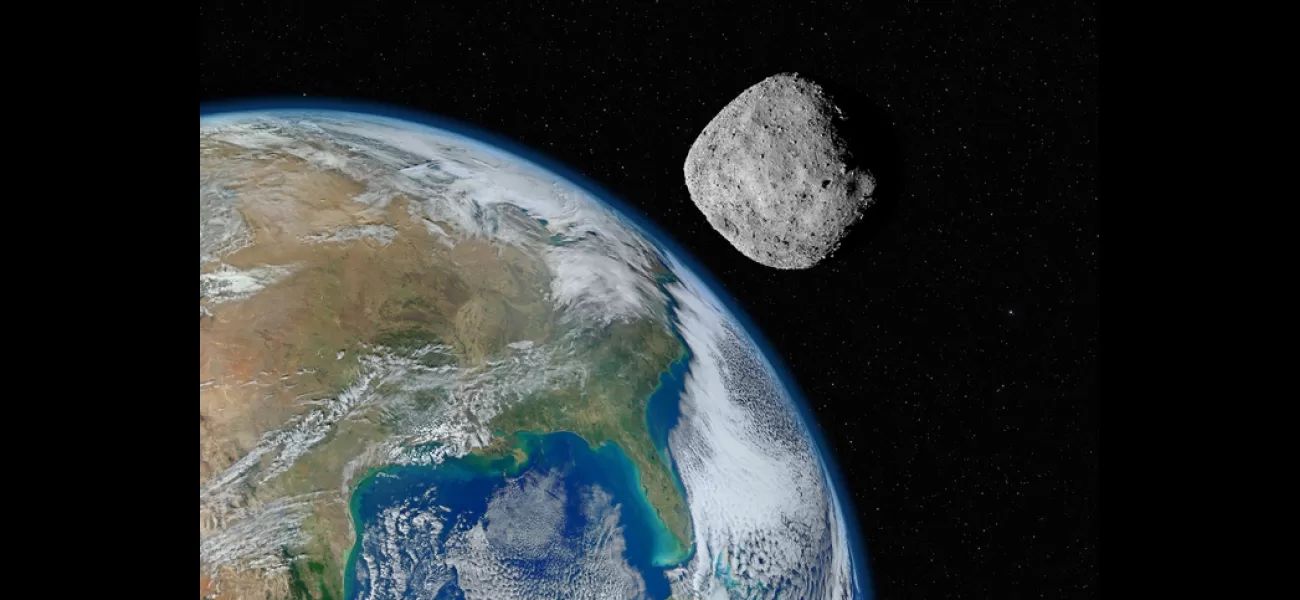Huge asteroid to pass by Earth much closer than the Moon, larger than the Eiffel Tower.
Experts aim to learn more about 99942 Apophis to improve our defense against other potentially hazardous asteroids.
July 19th 2024.

A team of experts from the European Space Agency (ESA) is embarking on a groundbreaking mission to study the 99942 Apophis, an asteroid that is larger than the iconic Eiffel Tower. This ambitious endeavor is part of a larger strategy to strengthen our defenses against potentially dangerous space rocks.
The asteroid, which is currently hurtling through space, is on a collision course with Earth. In order to gather crucial information about this rare event, ESA plans to send a spacecraft to Apophis. This will be the first time in 5,000 to 10,000 years that an asteroid of this size will come this close to our planet.
As it passes within 20,000 miles of Earth on Friday the 13th of April 2029, Apophis will be closer to us than the satellites used for TV broadcasting, navigation, and weather forecasting. In fact, it will be ten times closer than the Moon, making it visible to approximately 2 billion people across Europe, Africa, and Asia.
ESA's mission will not only provide us with valuable insights into the asteroid's composition and behavior, but it will also explore how it changes as it comes in close proximity to Earth. This is a rare opportunity for scientists and space experts to observe firsthand how an asteroid of this magnitude could potentially impact our planet.
Patrick Michel, Director of Research at CNRS at Observatoire de la Côte d'Azur, expressed his excitement for this groundbreaking mission, stating, "There is still so much we have yet to learn about asteroids. Until now, we have had to travel deep into the Solar System to study them and perform experiments ourselves to interact with their surface. But with Apophis, nature is bringing one to us and conducting the experiment itself. All we need to do is watch as it is stretched and squeezed by the strong tidal forces."
The spacecraft is expected to reach Apophis in February 2029, where it will closely observe and gather data on the asteroid's behavior. This rare event has caught the attention of scientists and space experts, who believe that the information gleaned from this mission will be crucial in developing strategies to protect Earth from future asteroid collisions.
Richard Moissl, the head of ESA's Planetary Defence Office, emphasized the significance of this mission, saying, "Ramses will demonstrate that humankind can deploy a reconnaissance mission to rendezvous with an incoming asteroid in just a few years. This type of mission is a cornerstone of humankind's response to a hazardous asteroid."
Ever since its discovery in 2004, Apophis has sparked concerns about a potential collision with Earth. However, after careful analysis, experts have concluded that such an event is highly unlikely in the next 100 years. With the Ramses mission, we are taking proactive steps to better understand and prepare for any future encounters with potentially hazardous asteroids.
The asteroid, which is currently hurtling through space, is on a collision course with Earth. In order to gather crucial information about this rare event, ESA plans to send a spacecraft to Apophis. This will be the first time in 5,000 to 10,000 years that an asteroid of this size will come this close to our planet.
As it passes within 20,000 miles of Earth on Friday the 13th of April 2029, Apophis will be closer to us than the satellites used for TV broadcasting, navigation, and weather forecasting. In fact, it will be ten times closer than the Moon, making it visible to approximately 2 billion people across Europe, Africa, and Asia.
ESA's mission will not only provide us with valuable insights into the asteroid's composition and behavior, but it will also explore how it changes as it comes in close proximity to Earth. This is a rare opportunity for scientists and space experts to observe firsthand how an asteroid of this magnitude could potentially impact our planet.
Patrick Michel, Director of Research at CNRS at Observatoire de la Côte d'Azur, expressed his excitement for this groundbreaking mission, stating, "There is still so much we have yet to learn about asteroids. Until now, we have had to travel deep into the Solar System to study them and perform experiments ourselves to interact with their surface. But with Apophis, nature is bringing one to us and conducting the experiment itself. All we need to do is watch as it is stretched and squeezed by the strong tidal forces."
The spacecraft is expected to reach Apophis in February 2029, where it will closely observe and gather data on the asteroid's behavior. This rare event has caught the attention of scientists and space experts, who believe that the information gleaned from this mission will be crucial in developing strategies to protect Earth from future asteroid collisions.
Richard Moissl, the head of ESA's Planetary Defence Office, emphasized the significance of this mission, saying, "Ramses will demonstrate that humankind can deploy a reconnaissance mission to rendezvous with an incoming asteroid in just a few years. This type of mission is a cornerstone of humankind's response to a hazardous asteroid."
Ever since its discovery in 2004, Apophis has sparked concerns about a potential collision with Earth. However, after careful analysis, experts have concluded that such an event is highly unlikely in the next 100 years. With the Ramses mission, we are taking proactive steps to better understand and prepare for any future encounters with potentially hazardous asteroids.
[This article has been trending online recently and has been generated with AI. Your feed is customized.]
[Generative AI is experimental.]
0
0
Submit Comment





